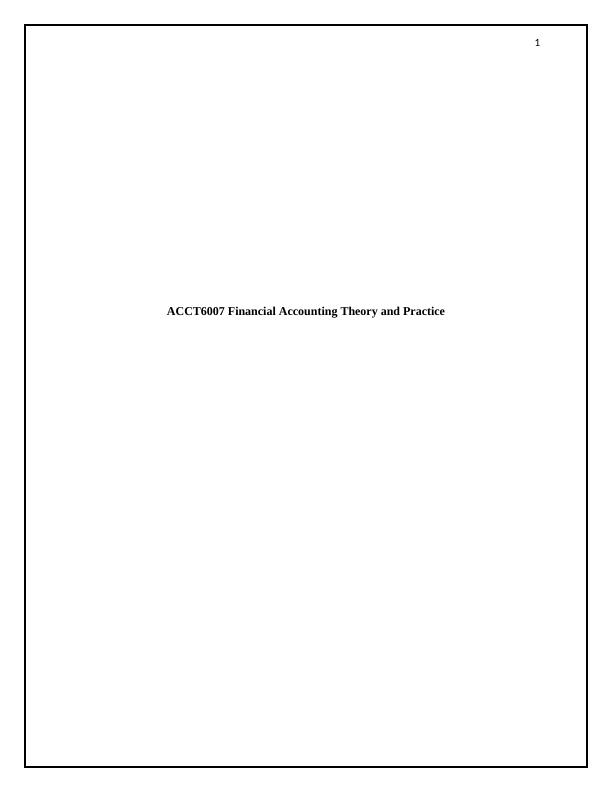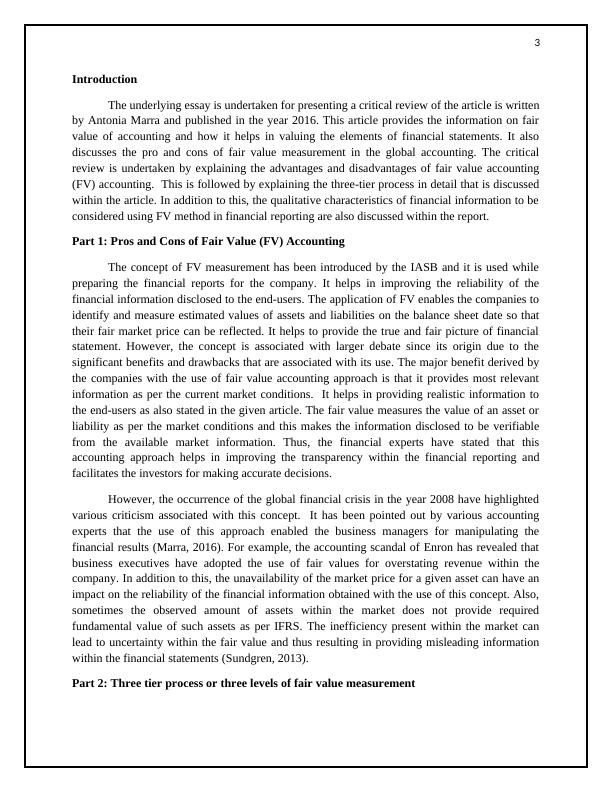Fair Value Accounting: Pros, Cons and Three-Tier Process
Download and critically analyse academic article written by Antonio Marra on the pros and cons of fair value accounting in a globalized economy.
Added on 2023-05-29
About This Document
This critical review discusses the pros and cons of fair value accounting, the three-tier process of fair value measurement, and the role of qualitative characteristics of financial information. The use of fair value accounting approach is associated with significant benefits and drawbacks. The three-tier hierarchy of fair value accounting prioritizes the inputs used to calculate the fair value of different elements. The financial information presented through the use of fair value is regarded to be highly reliable and relevant. The use of fair value helps in providing an unbiased perception of an entity’s assets and liabilities and as such provides realistic information to the end-users that is relevant for decision-making process of investors.
Fair Value Accounting: Pros, Cons and Three-Tier Process
Download and critically analyse academic article written by Antonio Marra on the pros and cons of fair value accounting in a globalized economy.
Added on 2023-05-29
End of preview
Want to access all the pages? Upload your documents or become a member.



